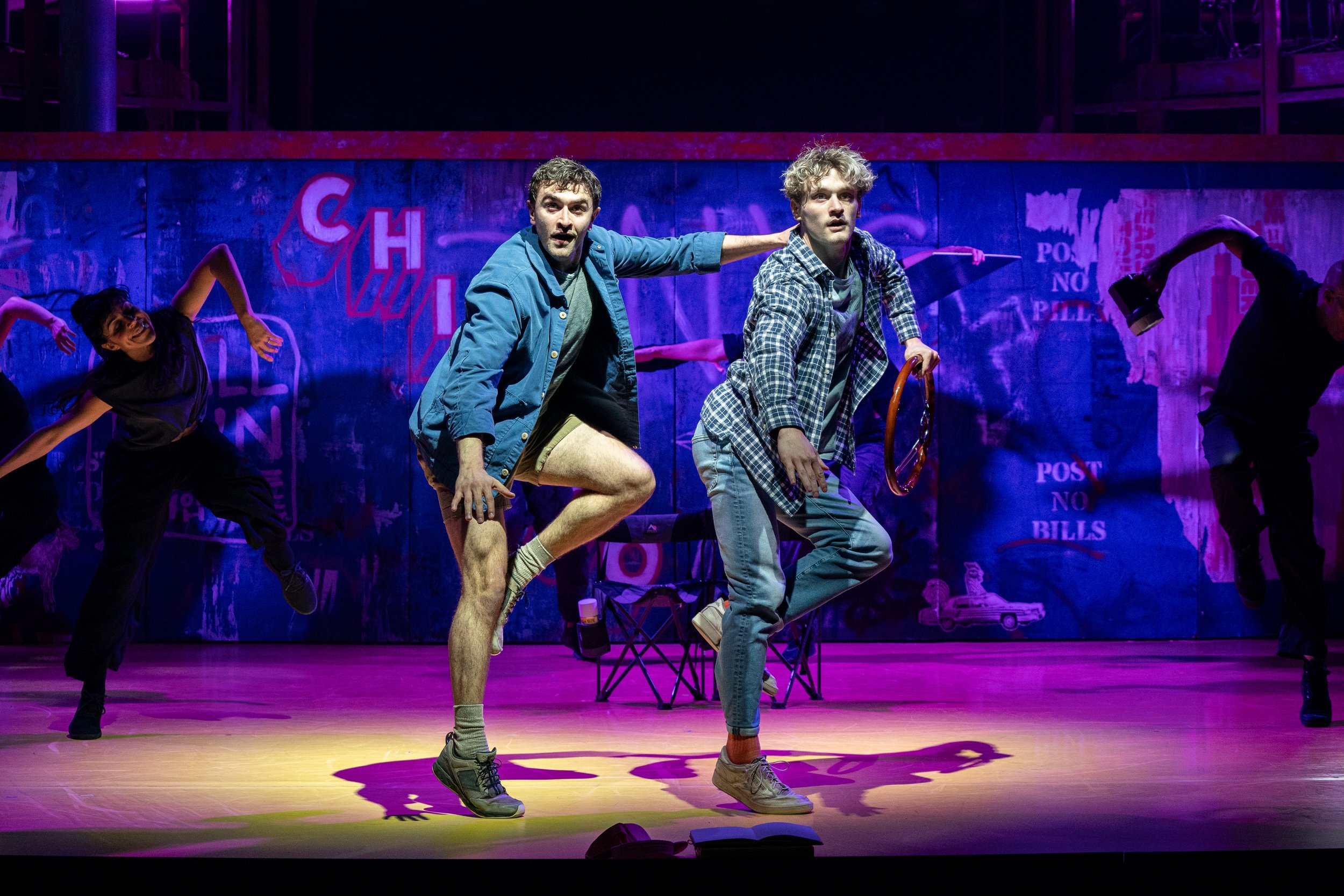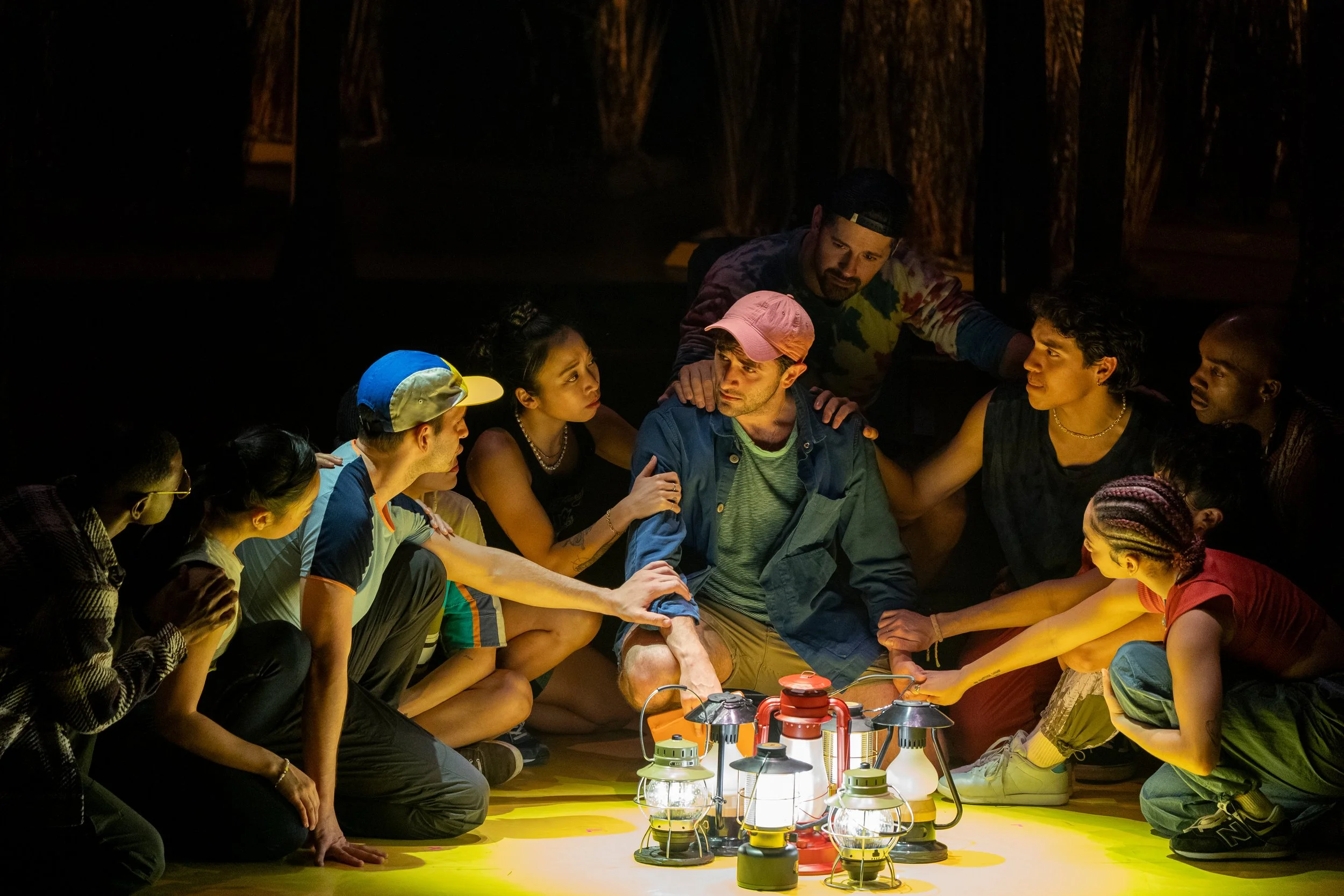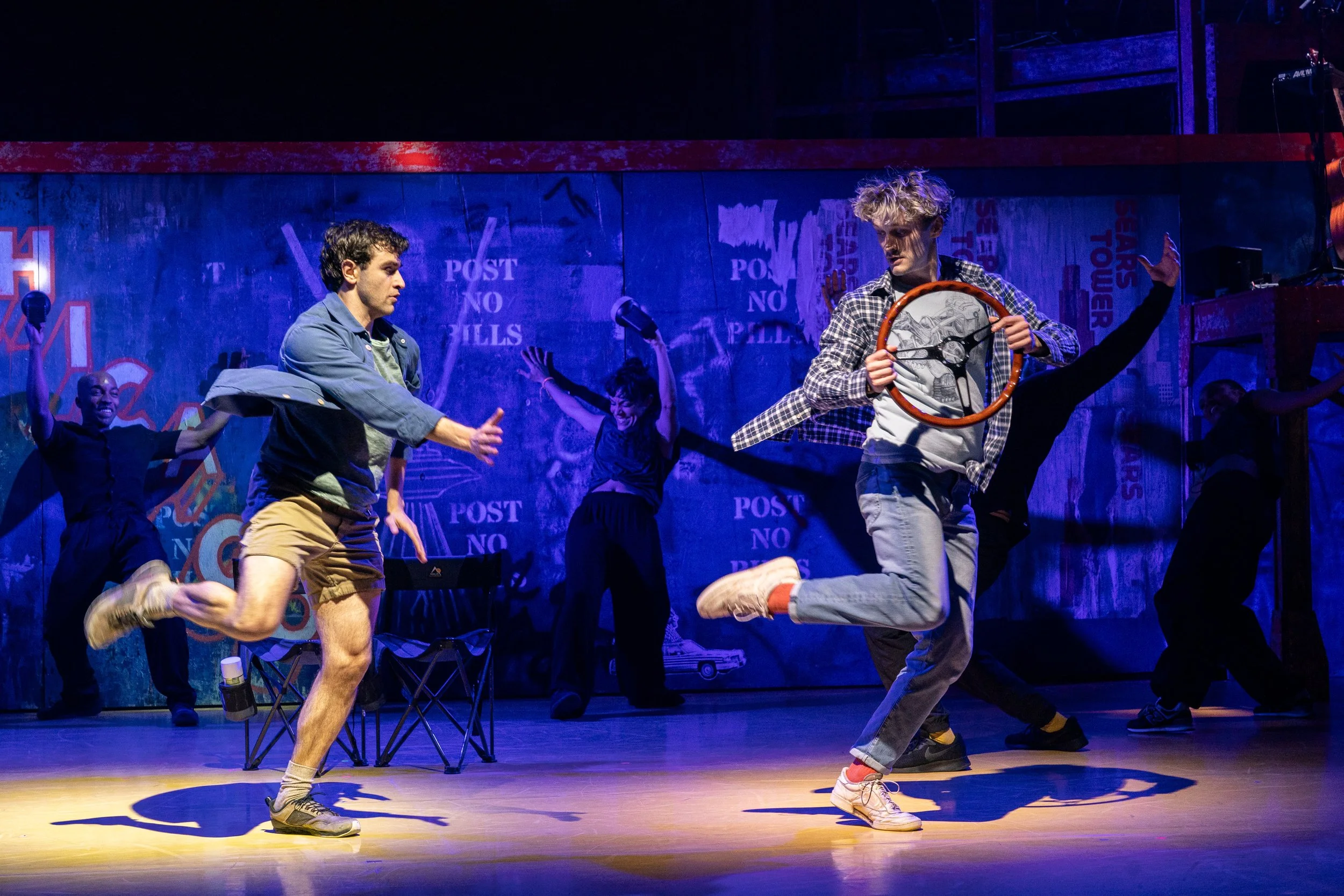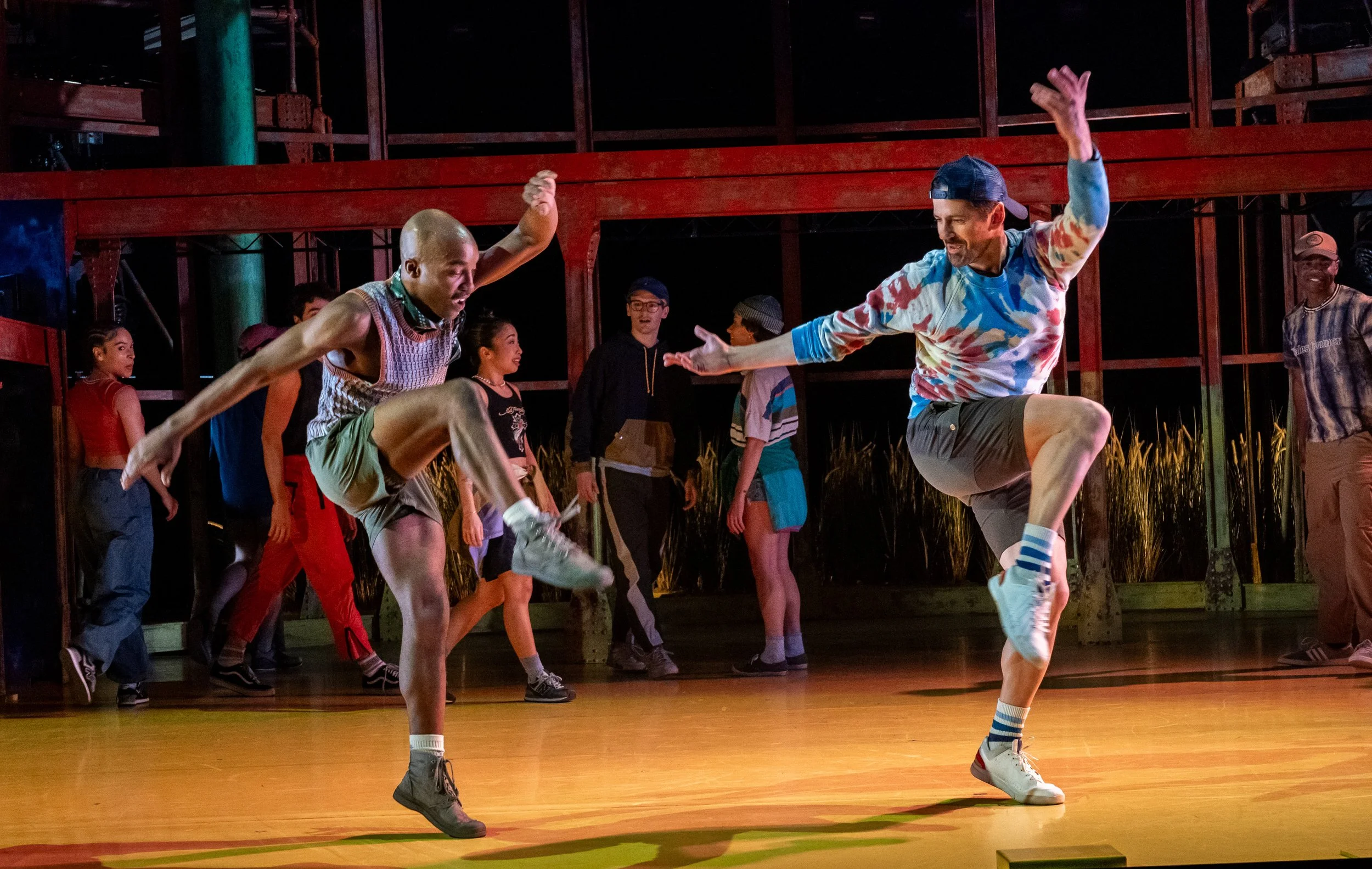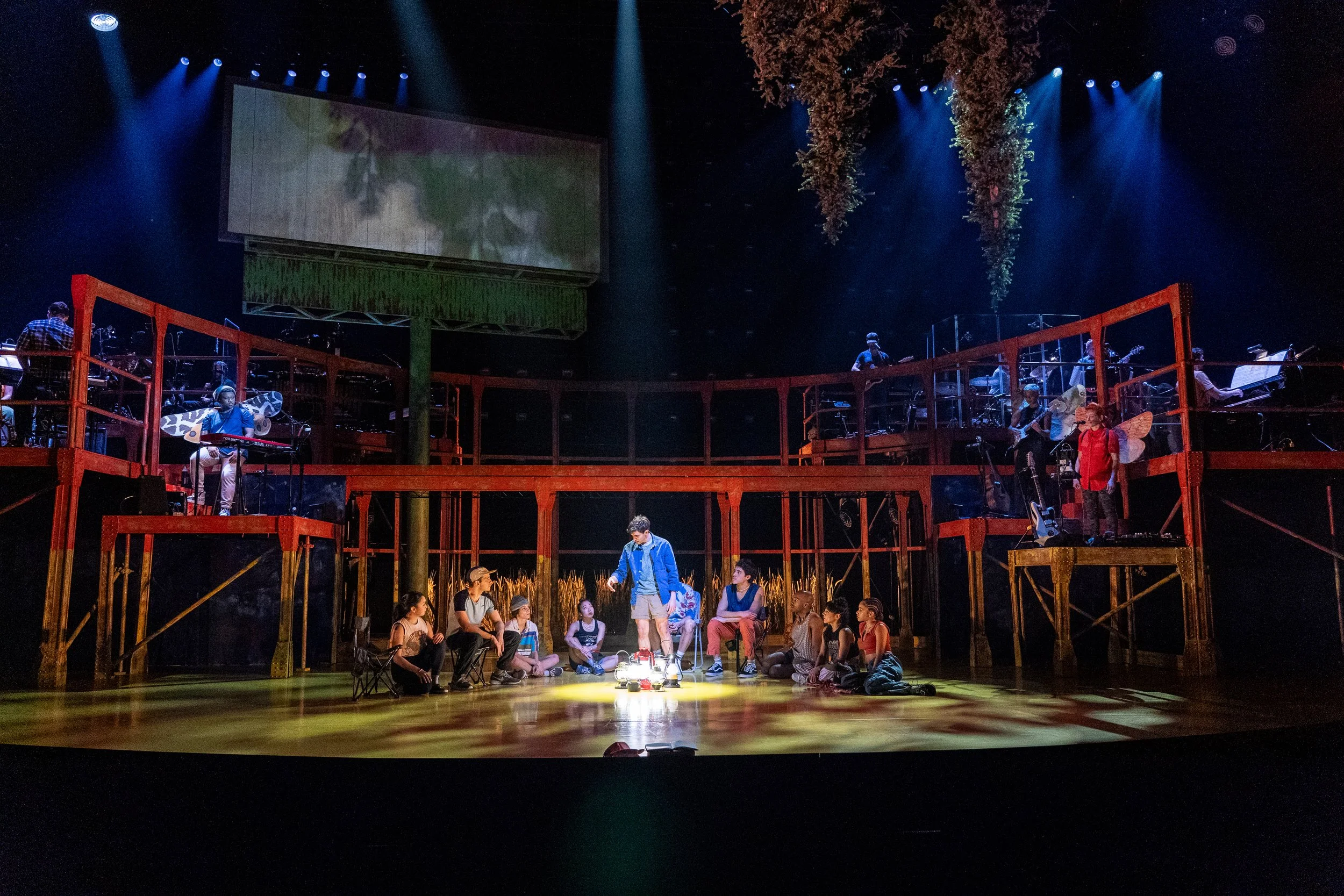Review: "Illinoise" Off Broadway at Park Avenue Armory
The show: “Ilinoise” through March 26 at the Park Avenue Armory. The show will have a limited Broadway run at the St. James Theatre, beginning performances on its official opening date of April 24 and running through August 10.
What makes it special?: A new dance-theater-music work directed and choreographed by Justin Peck, resident choreographer and artistic advisor of the New York City Ballet — and choreographer for the new film version of “West Side Story.” “Illinoise” features music and lyrics by Sufjan Stevens based on his evocative 2005 breakthrough indie concept album “Illinois.” This version has an original story by Peck and Pulitzer Prize-winner Jackie Sibblies Drury (“Fairview”), inspired by the lyrics and music of the songs on the album.
And a footnote: Singer-songwriter Stevens, recovering from the rare neurological condition Guillain-Barré Syndrome, was not a major participant in the show — which added an “e” to the title, I guess to separate it from the album — though Stevens did give the go-ahead to Peck, whom he worked with in six other projects.
So is it like Twyla Tharp’s “Movie’ Out” to Billy Joel’s music and “Come Fly Away” to songs sung by Frank Sinatra?: Well, yes — and no. It’s much more lyrical, poetic and abstract to those shows.
So how was the show?: Sometimes you don’t need words.
Sometimes a look, a gesture or in the case of “Illinoise” simply dance is all you need. And of course, Steven’s glorious, poetic and open-to-many-interpretations music.
Three superb vocalists (Elijah Lyons, Tasha Viets-VanLear and Shara Nova, aka My Brightest Diamond) wearing translucent wings perform on raised platforms set on the sides of the stage, giving voice and empathy to the characters below. We should all have such angels on our side.
But is there a story?: Several. It begins with a young man named Henry haunted by the past who feels the need to slip away in the middle of the night from a bed in which he shares with his lover in Chicago, taking the journal that contains his innermost thoughts. Clearly something disturbing is on Henry’s mind; something that is haunting him from the past; something that is painfully expressed in the journal.
In his journey into the countryside of the titular state, Henry comes across a pastoral haven where he encounters other young fellow travelers, also with journals. Like kids around the campfire, they each begin to share their personal stories of romance, grief, guilt, terror and fantasy — with each storyteller embodying a specific song from the album.
In this abstract safe space, they are among friends, who intuitively “get” and support each other.
Characters express themselves by gesture which begets movement which begets dance — and then back again, creating a swirl of lyrical expression inspired my Stevens’ music and lyrics, and, of course, is open to interpretation in the eyes, ears and heart of the viewer.
Sometimes the dance narratives are of adolescent angst, joy, fear and confusion. One involves zombies, danced by Jeanette Delgado. Another strange and meditative piece evokes serial killer John Wayne Gacy dressed as a clown, and performed by Alejandro Vargas. (I couldn’t find the connection with that vignette — other than perhaps the dangers that lie just below the surface — though I was fascinated by the performance.)
A third is performed by former New York City Ballet Principal Robbie Fairchild (Broadway’s “An American in Paris”) and playfully deals with our inner superheroes and performed to the song “The Man of Metropolis Steals Our Hearts”. Stunning and fun.
But it’s Henry’s journey that is the prominent tale here and which tells a stronger, clearer and heartbreaking narrative of love found and lost. This broken youth is dazzlingly danced — and acted — by Ricky Ubeda (Broadway’s “Carousel,” and 2014 winner in TV’s “So You Think You Can Dance”) and is a virtuosic performance.
Dressed in baseball hat, shorts and a backpack, he could be any-sensitive-youth, especially one who us gay. At first he shyly listens to the danced stories that these kindred spirits share. With gentle urging by the group, he finally summons the courage to tell his own story of his special friendship with a school pal named Carl, played by the charismatic Ben Cook (Broadway and film’s “West Side Story,” “Newsies”) and who dances as extraordinarily as he acts .
The relationship begins with boyish rough-housing, then takes an awkward turn as both flirt with a pretty girl (Gaby Diaz, also from “So You Think You Can Dance”) who clearly has her eyes on Carl. It becomes clear to us that Henry’s love of Carl is more than friendship, though unrequited.
After Carl breaks up with the girl, the two young men seek out larger and liberated lives and take a road trip which finally lands them in Chicago where their friendship deepens. But a phone call jettisons the duo’s big city plans and brings Carl back his small hometown and to the now-ailing girl, leaving Henry alone, lonely and unmoored, until he finds solace in Douglas (Ahmad Simmons). Meanwhile, Carl deals with his grief and guilt in a more tragic way.
When Henry’s tale is finished, the campfire friends give him comfort and support as he finally discovers a deeper connection with the steadfast Douglas. At least that’s how I saw the narrative to this wordless dance piece. The narrative outline seems fairly basic, and one that is not particularly surprising. But what fills in the blanks is how we interpret and respond to the tale as told by these extraordinary dancer-actors. But one criticism.
Which is?: The final 10 minutes following Henry’s catharsis overextends the piece’s ending without adding significantly further depth — or even new movements — and simply drifts to its meh conclusion, instead of building to something more theatrically satisfying.
And production values?: Terrific. Set designer Adam Ring has created a slightly surreal world filled inverted tress and morphing billboards. Brandon Stirling Baker lights that space with a multitude of lanterns, orbs and spectral illumination. Also adding to the experience are the sound designs by Garth MacAleavey and the 14-piece orchestra under the musical direction of Nathan Koci. The score is newly arranged by composer, pianist and frequent Stevens collaborator Timo Andres. There’s rich orchestral textures, but also unexpected rhythms and meters that feel more modern in its circuitous drifts.
Thoughts on leaving the parking lot?: People may respond quite differently to the production and I’m far from an expert of dance and am not familiar with the album. But simply as a theater-goer who also loves dance and theatrically adventurous shows, I am profoundly impressed and moved by much of “Illinoise” — and I look forward to seeing it again on Broadway at the St. James Theatre — though sadly not with Fairchild, who has a scheduling conflict with another show.

